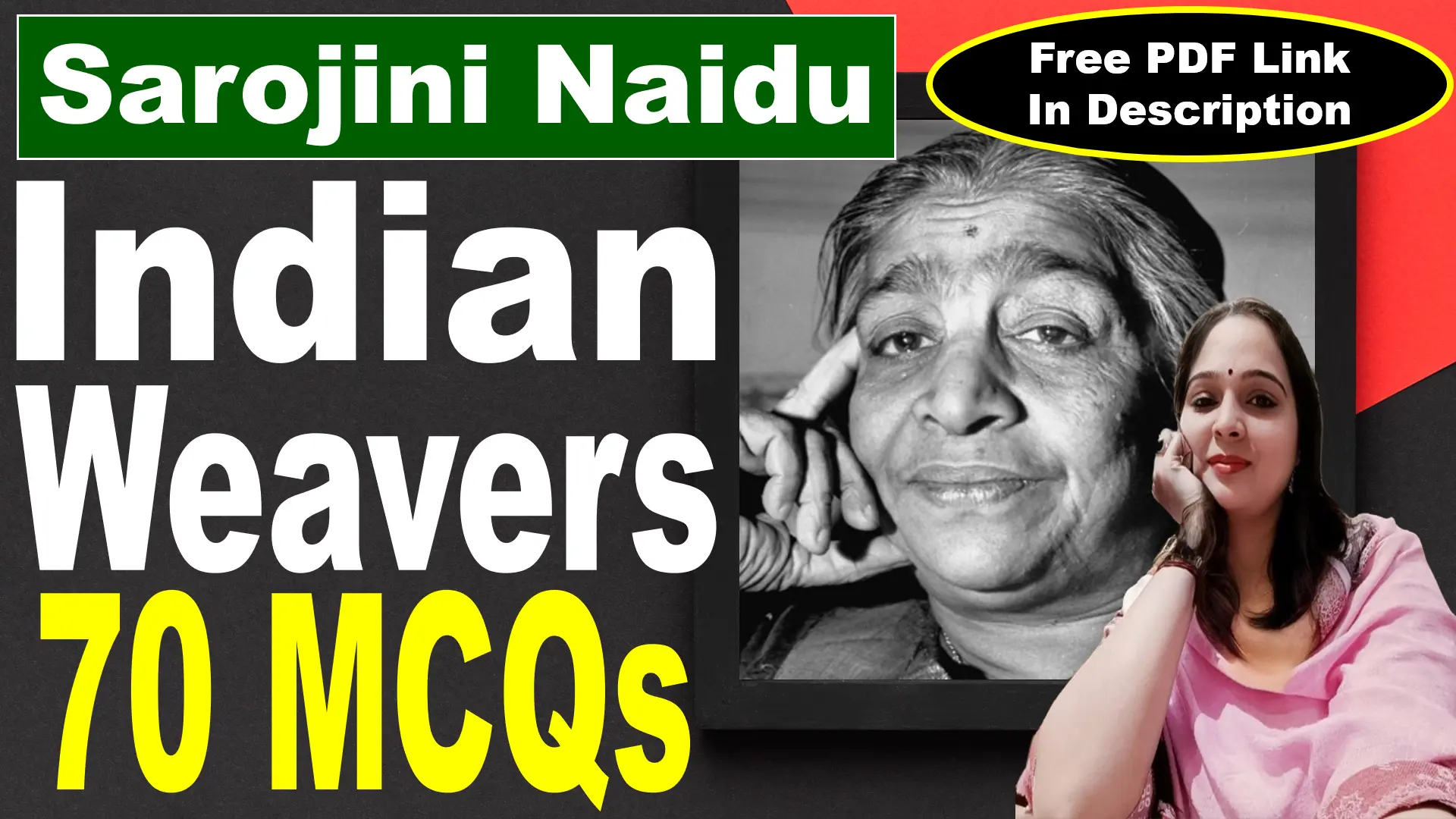
Essay Type Questions
Write the critical appreciation of the poem “Raksha Bandhan”.
Introduction
“Raksha Bandhan” by P. Sheshadri is a heartfelt celebration of the Indian festival that honors the sacred bond between brothers and sisters. Written as a Petrarchan sonnet, the poem combines cultural richness with poetic elegance, making it a timeless tribute to familial love and tradition. The poet vividly describes the essence of the ritual while addressing its emotional and spiritual significance.
Central Idea
The central idea of the poem revolves around the selfless love of a sister for her brother, symbolized by the rakhi. The poem emphasizes the importance of preserving such cultural traditions, which strengthen familial ties and moral values. It also rebukes those who dismiss the festival as outdated, asserting its enduring relevance and spiritual worth.
Structure & Rhyme Scheme
The poem is written in the Petrarchan sonnet form, consisting of an octave (ABBA ABBA) and a sestet (CDD EEC).
The octave introduces the ritual of Raksha Bandhan, describing its sacredness and historical continuity.
The sestet defends the festival’s value against skeptics and celebrates the purity of sisterly love.
This structure allows the poet to first describe and then reflect on the significance of the tradition.
Theme
Sibling Bond: Celebrates the love, care, and protection shared between siblings.
Tradition vs Modernity: Emphasizes the timeless relevance of Raksha Bandhan, defending it against dismissive attitudes.
Purity of Emotions: Highlights a sister’s unconditional love and prayers for her brother’s well-being.
Cultural Preservation: Advocates for the continued observance of meaningful rituals as a way of maintaining cultural and emotional connections.
Style
Sheshadri’s style is descriptive and evocative, blending cultural pride with lyrical beauty. The poet uses vivid imagery to bring the festival to life while maintaining a logical flow in defending its significance. The tone shifts between celebratory and argumentative, reinforcing the poem’s emotional depth.
Poetic Devices
Imagery:
“Silken tassel tipped with gold” creates a vivid picture of the rakhi.
“Lands bathed in welcome rain” evokes the monsoon season’s joyous atmosphere.
Symbolism:
The rakhi symbolizes love, protection, and faith.
The rains signify renewal and prosperity.
Rhetorical Question:
“Who will be rashly bold and flout this festival?” engages the reader and challenges skeptics.
Alliteration:
“Sacred day in Sravan” and “happy bands of brothers” enhance rhythm and mood.
Enjambment:
The lines flow seamlessly, reflecting the continuity of tradition.
Critical Commentary
Though detailed literary critiques of Sheshadri’s works are scarce, his poem “Raksha Bandhan” is widely appreciated for its cultural depth and poetic finesse. Scholars regard it as a fine example of Indo-Anglian poetry that bridges Indian traditions with Western poetic forms. Its defense of rituals resonates with the cultural pride seen in Indian English literature of the early 20th century.
Message
The poem conveys the importance of preserving meaningful traditions like Raksha Bandhan, which foster love, unity, and moral values. It highlights the purity of familial bonds, particularly the selfless love of a sister, as a timeless and irreplaceable aspect of human relationships.
Conclusion
“Raksha Bandhan” is a poignant tribute to one of India’s most cherished festivals. Through its vivid imagery, lyrical style, and strong defense of traditions, the poem captures the emotional and cultural richness of Raksha Bandhan. P. Sheshadri not only celebrates the festival but also reminds readers of the enduring power of love and tradition in an ever-changing world. This sonnet stands as a testament to the universal values of family and faith, making it a meaningful and memorable piece of poetry.
Long note on the themes of the poem “Raksha Bandhan”.
1. Sibling Bond
The central theme of the poem is the sacred bond between brothers and sisters. The poet portrays this relationship as deeply emotional and spiritual, symbolized by the act of tying a rakhi. The rakhi is not merely a thread; it represents a sister’s love and her wish for her brother’s safety and success. In return, the brother pledges to protect her, reinforcing their mutual affection and responsibility. This theme highlights the essence of familial love and unity, making Raksha Bandhan a celebration of enduring sibling relationships.
2. Tradition and Cultural Significance
The poem emphasizes the importance of preserving traditions like Raksha Bandhan, which have been passed down through generations. The poet views the ritual as a cornerstone of Indian culture, imbued with deep emotional and spiritual meaning. By defending the festival against modern skepticism, the poet underscores its role in maintaining cultural identity and familial harmony. This theme resonates with the idea that traditions are not merely ceremonial but are vital for fostering moral values and emotional connections.
3. Purity of a Sister’s Love
The poet glorifies the selfless and unconditional love of a sister for her brother. Her prayers and blessings, expressed through the ritual of tying a rakhi, are depicted as pure and unmatched. This theme highlights the self-sacrificing nature of a sister’s devotion, which is rooted in her genuine care and concern for her brother’s well-being. The poet elevates this love as one of the most powerful and noble emotions, transcending materialism and selfishness.
4. Defense of Rituals and Traditions
A significant theme in the poem is the poet’s defense of Raksha Bandhan against those who dismiss it as an “ancient mummery.” The poet challenges such views by highlighting the festival’s timeless relevance and emotional depth. This theme is a critique of modern attitudes that often undermine traditional values, urging readers to appreciate the profound meaning behind cultural rituals. Through this, the poet makes a case for preserving traditions as a way of nurturing human connections and maintaining social harmony.
5. Nature and Renewal
The poem is set in the month of Shravan, which coincides with the monsoon season. The imagery of “lands bathed in welcome rain” symbolizes renewal, fertility, and prosperity. This theme connects the festival to nature’s nurturing spirit, portraying Raksha Bandhan as an occasion that aligns human relationships with the cycles of renewal and growth in the natural world. The monsoon setting adds a sense of purity and auspiciousness to the festival, reinforcing its sacredness and joyous mood.





